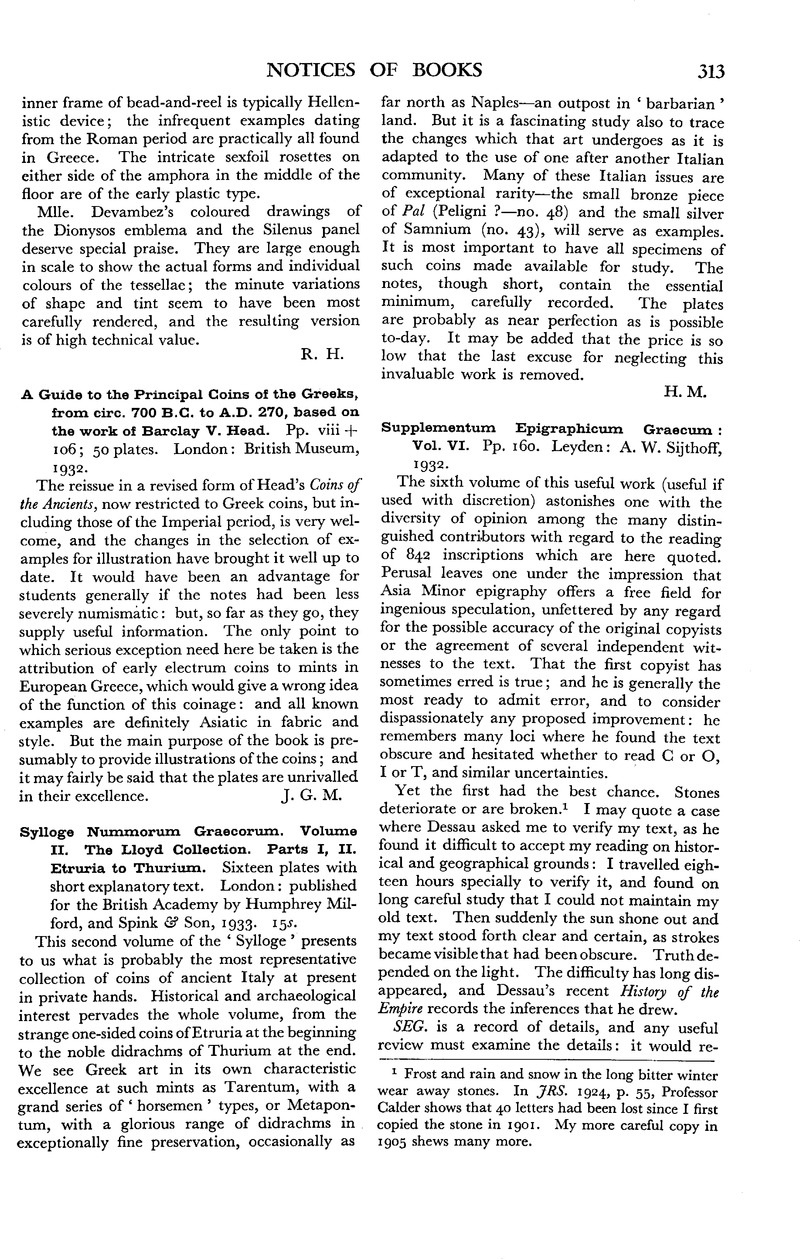No CrossRef data available.
Published online by Cambridge University Press: 23 December 2013

page 313 note 1 Frost and rain and snow in the long bitter winter wear away stones. In JRS. 1924, p. 55, Professor Calder shows that 40 letters had been lost since I first copied the stone in 1901. My more careful copy in 1905 shews many more.
page 314 note 1 Franz points out on CIG. 4042, that it dates about Dec. 176. In Nov. 176 Marcus and Commodus had a very dangerous voyage, which caused Apollonius to place in the Temple of Sarapis (images of) the Dioscuri.
page 314 note 2 There are many cases, published and unpublished.
page 315 note 1 Editores SEG. omisisse credunt lapidarium syllabas ![]() et
et ![]() et
et ![]() ante
ante ![]() There is, however, abundant space free: the loss is due to breaking of the stone.
There is, however, abundant space free: the loss is due to breaking of the stone.
page 315 note 2 I copied a stone at Nacolea, which has ![]() twice.
twice.
page 315 note 3 ![]()
page 315 note 4 Wilhelm suggests ΑΓΝΟΝ; it is Homer's ΔΕΕΛΟΝ.
page 316 note 1 A soldier of Leg. VIII was buried at Cyrrhus in Syria, pointing to a detachment serving in a Syrian war during Cent. III, perhaps under Gordian. See P. W. Real-Enc. s.v. Ala.
This subject needs investigation. Exceptions test and prove the rule.
page 317 note 1 Probably Καλακαγαθίῳ is due to the bad Greek of the composer, but it may be due to the engraver, who handled Καλ | ο | καγαθίω badly.
page 317 note 2 A ridge runs north and south about 4 miles, about 1500 feet above the modern Yallowadj: it is cut through by the Anthios in a steep ravine. Antioch lies between the ravine and the northern end of the ridge.
page 317 note 3 I have several unpublished.
page 317 note 4 It seems now to me that he allowed the destruction of the Hieron of Men-over-against-Antiochea in 324 (BSA. 1912–3).
page 318 note 1 High-pressure water supply in Anatolian cities. Others who treat it use his measurements and descriptions in Anatolia. Weber published several articles in AZ., about and after 1880. That on Antioch I have lost.
page 318 note 2 Opium is extensively cultivated still in two places, Antioch and Afiom Kara Hissar; this is the standard in the British Pharmacopœia. The coins of Prymnessos and this altar at Antioch shew it. The altar is the Hermes; the dedication is not ‘to Hermes.’